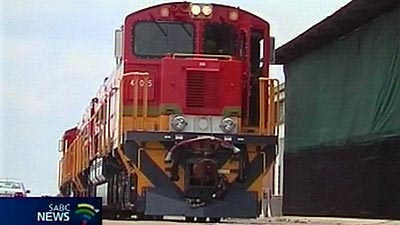Government has identified five major projects as part of its massive infrastructural development drive. The programmes will be geographically-focussed and will also focus on health and basic education infrastructure, information and communication technologies and regional integration as part of its massive infrastructural development drive.
This was announced by President Jacob Zuma in his State of the Nation Address (SONA) in Parliament in Cape Town this evening. This is the President’s fourth SONA.
He says government will use the project management expertise gained during the 2010 FIFA Soccer World Cup to make this project a success. “The infrastructure plan will be driven and overseen by the Presidential Infrastructure Coordinating Commission, (PICC), which was established in September (2012), bringing together Ministers, Premiers and Metro Mayors under the leadership of the President and the Deputy President,” said Zuma.
The first project will see the development and integration of rail, road and water infrastructure, centred around two main areas in Limpopo: the Waterberg in the Western part of the province and Steelpoort in the eastern part.
“These efforts are intended to unlock the enormous mineral belt of coal, platinum, palladium, chrome and other minerals, in order to facilitate increased mining as well as stepped-up beneficiation of minerals. Using the developments in Limpopo as a base, we will expand rail transport in Mpumalanga, connecting coalfields to power stations,” said Zuma.
The second one will improve the movement of goods and economic integration through a Durban-Free State-Gauteng logistics and industrial corridor.
Zuma said: “This project is intended to connect the major economic centres of Gauteng and Durban/Pinetown, and at the same time, connect these centres with improved export capacity through our sea-ports.”
The President also announced the Market Demand Strategy of Transnet, which entails an investment, over the next seven years, of R300 billion in capital projects.
R200 billion is allocated to rail projects and the rest to projects in the ports. “Amongst the list of planned projects, is the expansion of the Iron Ore Export channel from 60 million tons per annum to 82 million tons per annum,” said Zuma. It also includes various improvements to the Durban-Gauteng Rail corridor and the phased development of a new 16 million tons per annum manganese export channel through the Port of Ngqura in Nelson Mandela Bay.
Zuma said that the Market Demand Strategy will result in the creation of more jobs in the South African economy, as well as increased localization and Black Economic Empowerment. “It will also position South Africa as a regional trans-shipment hub for Sub-Saharan Africa and deliver on NEPAD’s regional integration agenda.”
The President announced that the Port Regulator and Transnet have agreed to an arrangement which will result in exporters of manufactured goods, receiving a significant decrease in port charges, during the coming year, equal to about R1 billion.
A major new South Eastern node is also in the plan – this is expected to improve the industrial and agricultural development and export capacity of the Eastern Cape region and expand the province’s economic and logistics linkages with the Northern Cape and KwaZulu-Natal.
Zuma said government is committed to building a dam using the Umzimvubu River as the source, in order to expand agricultural production in the Eastern Cape.
In the North West, government hopes to expand the roll-out of water, roads, rail and electricity infrastructure is on the cards. Ten priority roads will be upgraded, said the President. “We see enormous potential along the west coast of the country and need to improve infrastructure to unlock this potential,” he added.
Government wants to expand the iron-ore rail line between Sishen in Northern Cape and Saldanha Bay in the Western Cape, which will create large numbers of jobs in both provinces. The iron-ore capacity on the transport-side is expected to increase capacity to 100 million tons per annum. “This will allow for the expansion of iron-ore mining over the next decade to feed the developing world’s growing investment in infrastructure.”
iframe width=”420″ height=”315″ src=”http://www.youtube.com/embed/liuv80E6Ngc” frameborder=”0″ allowfullscreen>
– By Antoinette Lazarus


